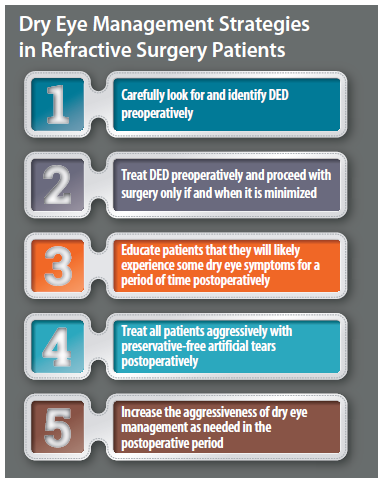
Dry eye should be diagnosed and treated aggressively before undertaking cataract surgery as it may compromise pre surgical keratometric readings and visual outcomes. An estimated three quarters of eyes undergoing cataract surgery have astigmatism of more than 0.5D and one third have more than 1D. The unstable tear film affects the quality of optical surface reflections from the cornea, altering K readings significantly,measured with manual keratometry or advanced devices. Dry eye disease, in one pilot study, was treated with Lipiflow thermal pulsation treatment (Johnson and Johnson Vision), twenty five eyes with visually significant cataract were followed up after 2 weeks of treatment. The magnitude of astigmatism was surprisingly higher post Lipiflow in 52% eyes, lower in 24 % eyes, unchanged in remaining. In addition, change in cylinder axis orientation was observed in seven eyes.
Take home message:
1.Always check for dry eye pre operatively.
2. Treat if necessary.
3. Re-measure the eye before making a surgical plan for astigmatism management.
